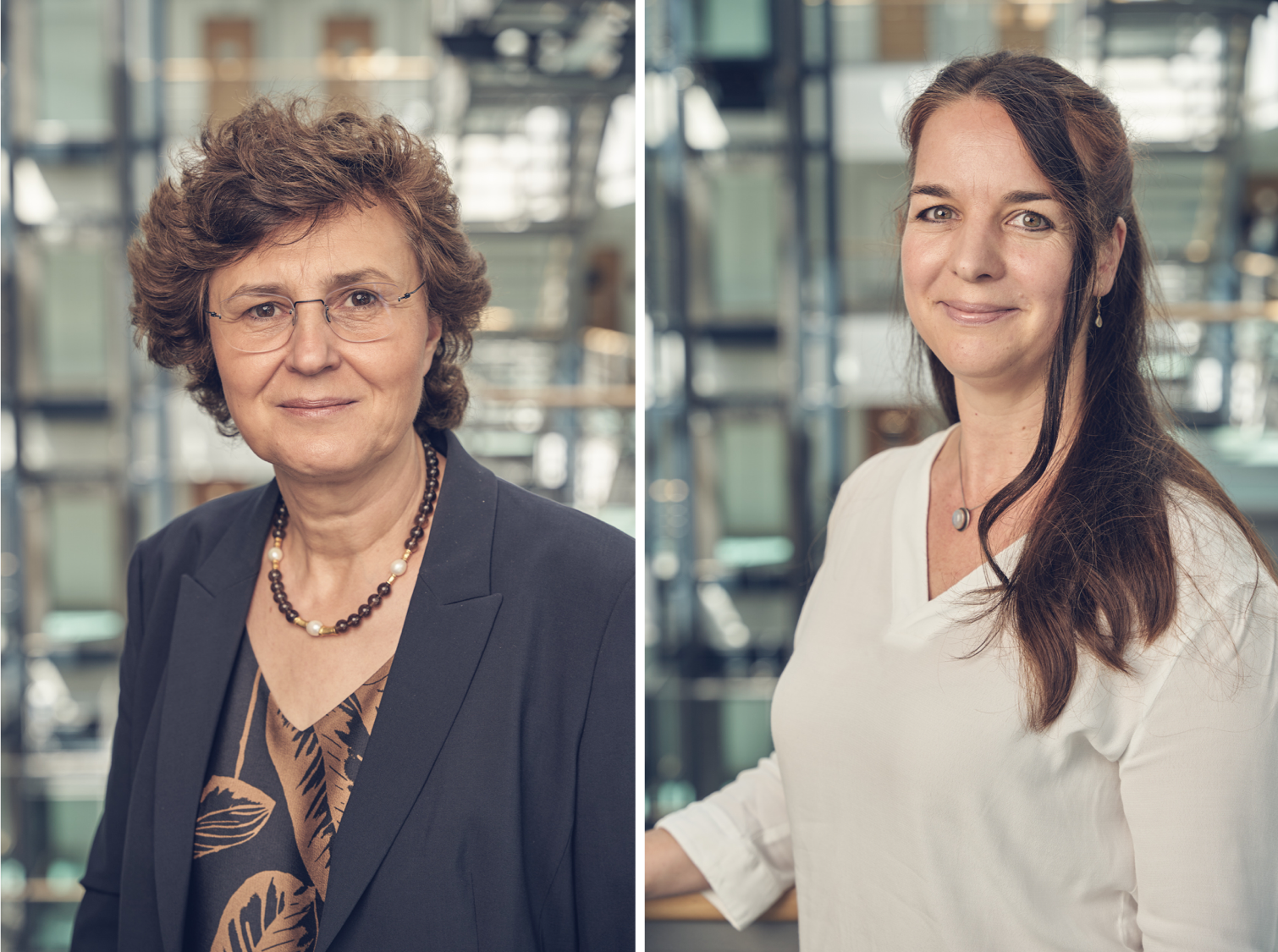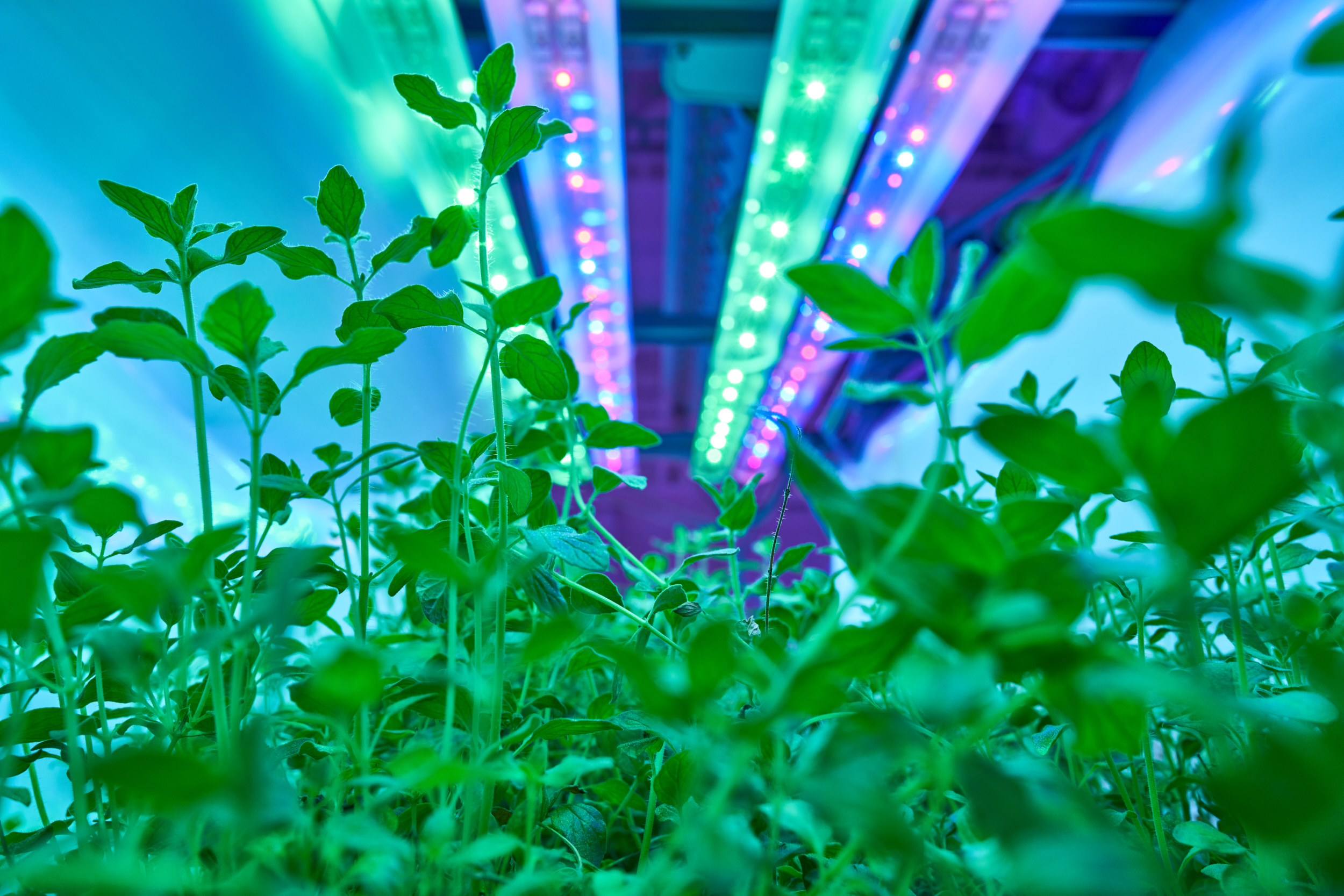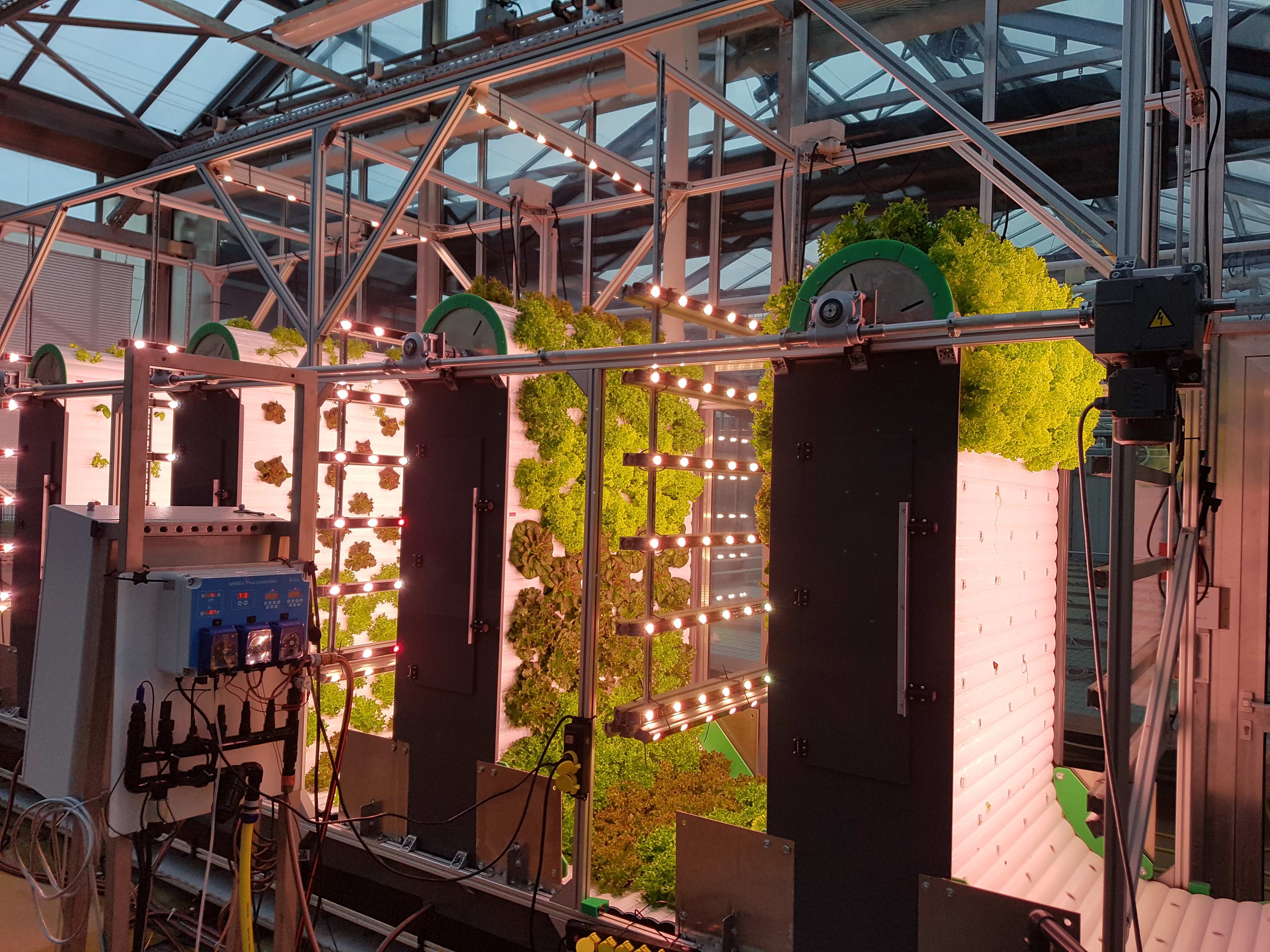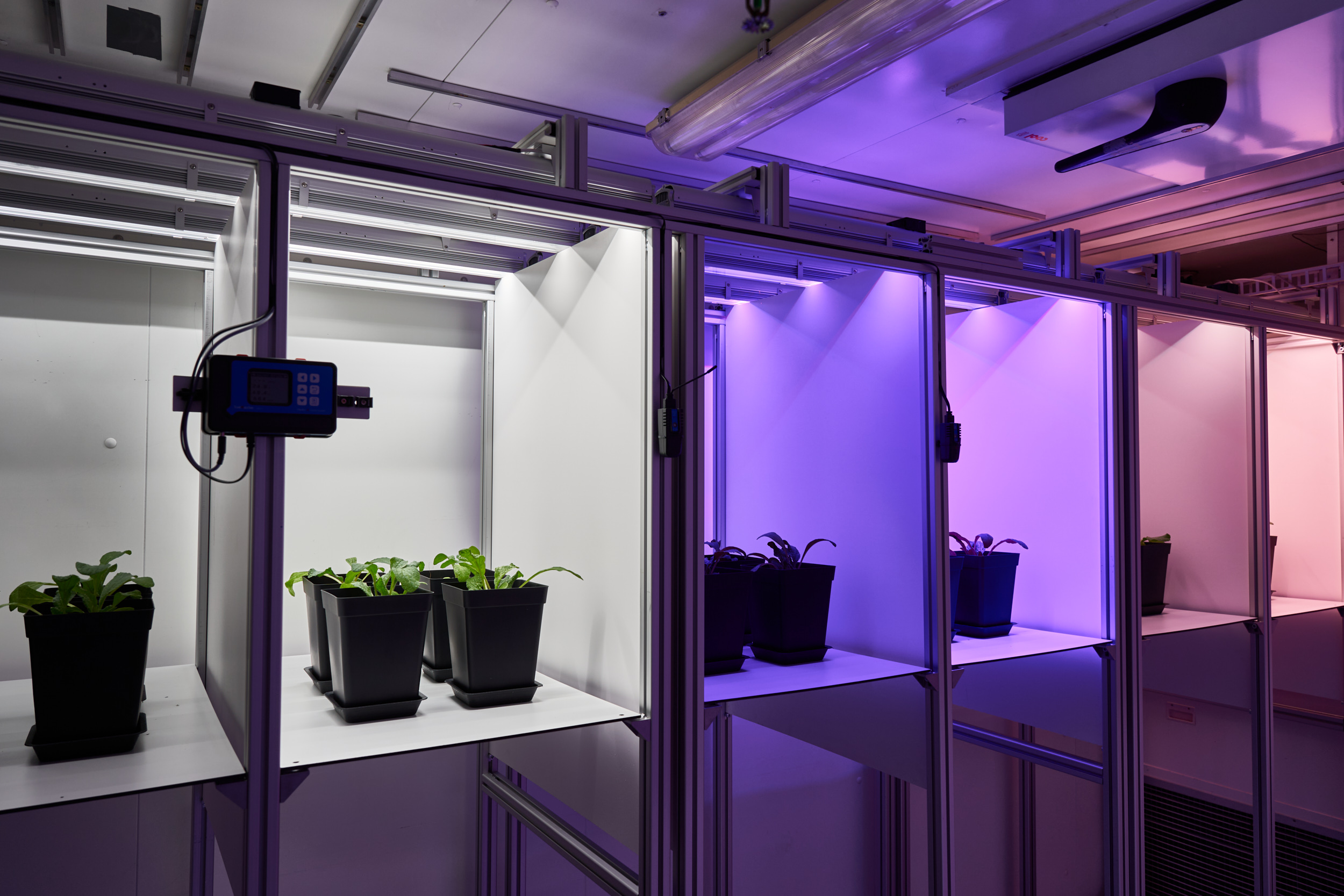Main navigation
NewFoodSystems: innovation space for tomorrow’s food
A rapidly growing world population and simultaneously rapidly shrinking arable land – these are just some of the major challenges facing the food industry. But how can solutions be found when they need to involve science, business, government and the public? Answers are being sought by the bioeconomy innovation space NewFoodSystems. Funded by the German Federal Ministry of Education and Research (BMBF), it is a network where science and industry can come together to develop sustainable food systems of the future.
Burgers made from insects? Meat from the lab? Oat milk only? Anyone following the public debate on novel foods will quickly realise that safety standards and regulatory requirements are far from the biggest hurdles for innovations such as insect proteins, in-vitro meat or plants farmed indoors. Foods that are unacceptable to consumers and unprofitable for business will never make it from idea to plate.
This is the sticking point being addressed by the nationwide innovation space NewFoodSystems. The project is funded by the German Federal Ministry of Education and Research (BMBF) and coordinated by the Max Rubner Institute in Karlsruhe, and is one of four bioeconomy innovation spaces in the "National Research Strategy Bioeconomy 2030".
NewFoodSystems brings all stakeholders on board

NewFoodSystems brings science and business together to make the food of the future fit for market. The new products and production systems being developed and evaluated in the innovation space need to be healthier, safer and more sustainable than before and must successfully negotiate the journey from concept to supermarket shelf. It seems to be working: one product from the innovation space that has already made this leap is a well-known lupin-based milk substitute developed by a company called Prolupin as part of the "Sustainable Protein Ingredients" sub-project.
But as well as promoting the development and evaluation of new foods and food systems, NewFoodSystems also engages with the public, as consumers will be the ones most affected by tomorrow's nutrition and the transformation of food systems very much depends on them. One thing is sure: change is urgently needed.
Without food innovations it will not work

"We are clearly facing a transformation of our food systems", says Prof. Dr. Sabine Kulling, coordinator of the NewFoodSystems innovation space. The world's population is expected to grow to around ten billion by 2050.1) This large number of people will not only have to be adequately fed from arable land that is shrinking due to climate change, but they will also have to be fed healthy food. Even now, an increasing number of diseases in both rich and poor countries are nutrition-related.2) Food production is also responsible for high levels of environmental pollution,3), 4) accounting for around a third of global greenhouse gases emitted by humans, according to a study published in Nature Food in 2021.5)
New production methods, such as those emerging from NewFoodSystems, will therefore have to take into account not only economic interests, but also, and more importantly, the maintenance of basic supplies. New farming concepts developed in the innovation space, such as vertical or indoor farming that use less space and resources, alternative protein sources such as insects or protein-rich plants that have a smaller environmental footprint than animal farming, or production methods for healthier food that are simply safer and less polluting are high on the list of promising topics for the future.
Projects benefit from cross-industry information-sharing
Vertical farming seems particularly promising in the face of climate change. The NewFoodSystems In4Food project focuses on the most resource-saving, efficient and safe indoor cultivation of paracress, borage, oregano and other spices and aromatic plants. The indoor cultivation of crops for industrial food production using closed cultivation systems such as OrbiPlant or OrbiLoop from the In4Food project partner Fraunhofer IME has many advantages. These systems use a rotating conveyor belt and special spraying and lighting techniques to create optimal growing conditions. This not only saves a lot of space and thus cultivation area, but also drastically reduces water consumption and prevents pollutants such as nitrates from entering the groundwater.

But indoor farming is about more than just space-saving and sustainable cultivation. The In4Food team is working to make plants naturally produce more valuable ingredients, such as essential oils, while reducing potentially harmful substances. This is done, for example, by varying the light conditions. Microorganisms also act as a natural fertiliser that promotes plant growth - entirely without pesticides.
The research is being conducted in direct exchange with industrial partners who are also seeking to use the results for innovative solutions, for example to reduce sugar in food. "The innovation space is ideal, of course, because there is close networking between research and industry partners. You don't always have that when you apply for research projects," says Dr. Melanie Huch, scientist at the Max Rubner Institute and head of In4Food.
Kulling also sees the exchange of information over short distances and access to the know-how of different industries as particularly valuable. Research institutes share their equipment with start-ups, law firms offer advice on the Novel Food Regulation and industry partners share their network and market experience. Since 2019, many of the participating institutes, now numbering more than sixty, have been working together, developing an enormous amount of trust in the process, says Kulling. She therefore hopes that participants will stay in touch beyond 2025 – when NewFoodSystems comes to an end – to continue to look for solutions together over the long term.
A lot of catching up to do in terms of education
But above all, the public needs to be brought on board if the change is to succeed, and the researchers know there is a lot of catching up to do. This has less to do with public reluctance than with a glorified image of food production that has been conveyed to the world over the years through channels such as advertising. Kulling comments: "Apparently it was believed that the public should not see how food is produced today, more often in steel tanks than meadows."

The picture is very different in other parts of the world. Singapore – the first country to allow the marketing of in-vitro meat6) – has long been open about the fact that alternatives to conventional food production are inevitable. The small country simply lacks the cultivation space. "Public acceptance of new things is much higher there," says Kulling.
NewFoodSystems also wants to create more transparency in Germany, and a large part of its work involves informing the public about food production through social media, workshops and exhibitions. The team will be at the German National Garden Show until 8 October 2023 and there are also campaign days and exhibits at the German Museum in Nuremberg. It's about education, building trust and communicating that change is inevitable. "I think you have to take everyone with you, otherwise it won’t happen," says Huch.
The results of a study on the acceptance of insects as food, recently published in the journal Appetite7), show that this change is already taking place, at least in parts of the population. The younger generation in particular seems to be more open-minded. However, another finding of the study is that people need to be told beforehand exactly what is in the food.
Sources:
1) Agrawal, M. (2021). Future of Food: Exploring Challenges to Global Food Systems. State of the Planet. https://news.climate.columbia.edu/2021/01/15/global-food-systems-challenges/
2) Puteri B. et. al. (2023): Booming the bugs: How can marketing help increase consumer acceptance of insect-based food in Western countries? Appetite 1;187:106594. https://www.sciencedirect.com/science/article/pii/S0195666323001472?via%3Dihub
3) Hamrick, C. & Chen, G. (2021): The challenges of future foods from prevention of nutrient deficiencies to the management of diabetes. Journal of future foods 1(1), 47–57. https://doi.org/10.1016/j.jfutfo.2021.08.001
4) Climate Change and Land: An IPCC Special Report on climate change, desertification, land degradation, sustainable land management, food security, and greenhouse gas fluxes in terrestrial ecosystems. (2019). https://www.ipcc.ch/site/assets/uploads/2019/08/4.-SPM_Approved_Microsite_FINAL.pdf
5) Milman, O. (2021): Meat accounts for nearly 60% of all greenhouse gases from food production, study finds. The Guardian. https://www.theguardian.com/environment/2021/sep/13/meat-greenhouses-gases-food-production-study
6) Stöhr, M. (2022): Stammzellenfleisch aus Singapur- So schmeckt die Zukunft. Spiegel. https://www.spiegel.de/ausland/stammzellenfleisch-aus-singapur-wie-wir-in-zukunft-essen-a-f6321eea-5b82-4f32-8566-8bdc7f46d8e2
7) Xu, X., et al. (2021). Global greenhouse gas emissions from animal-based foods are twice those of plant-based foods. Nature Food, 2(9), 724–732. https://doi.org/10.1038/s43016-021-00358-x